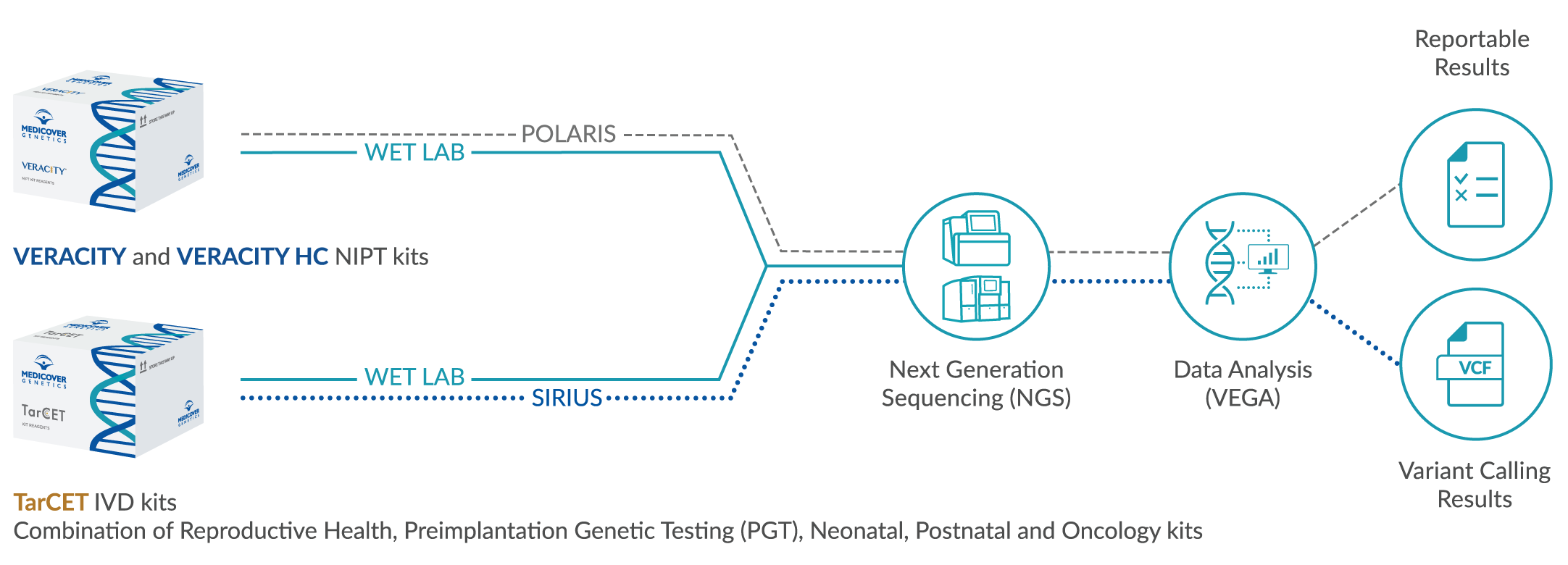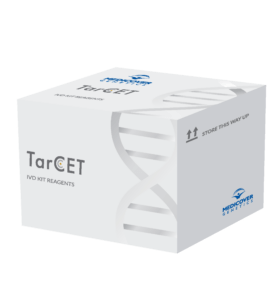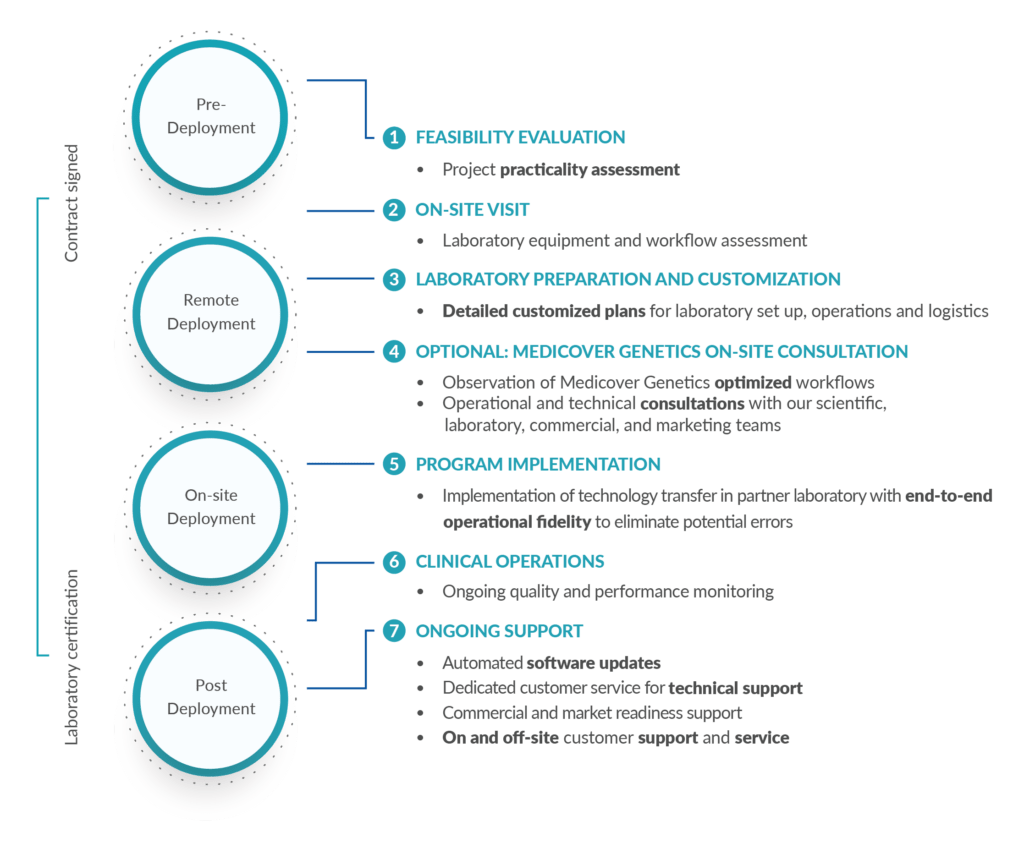Scientific background
Fragile X syndrome is the most common monogenic inherited cause of intellectual disability. In contrast to other diseases with X-linked recessive inheritance, fragile X syndrome shows healthy male carriers, and in some female patients symptoms are as severe as in males. The incidence of affected males is estimated to be 1:5164 according to a 2009 study.
The cause of fragile X tremor/ataxia syndrome (FXTAS) is a CGG triplet repeat expansion in the non-translated 5' region of the FMR1 gene on the long arm of the X chromosome. The most frequent normal alleles in the general population have a length of 29-30 CGG repeats. Alleles in the range of 45 to 54 repeats are defined as gray zone alleles (EMQN EQA). Some instability is already present at this repeat count, regardless of the sex of the carrier; however, expansion to a full mutation in one generation has not yet been observed in this range.
Alleles with 55 to 200 CGG repeats are referred to as premutation. In females, inheritance of premutations is unstable, usually leading to an extension of more than 200 triplets (full mutation) when they are passed on to the next generation. Above this length, methylation of cytosine residues of the repeat and adjacent regulatory elements occurs, ultimately leading to inhibition of transcription and consequent failure of the FMR1 gene product. In males, the premutation is stable when passed on to the next generation. Mothers of children with a full mutation are obligate carriers with either a premutation or a full mutation. The risk of recurrence is up to 50% for affected children depending on the sex or the length of the premutation in the mother.
In the presence of the full mutation, the developmental delay is first noticeable in childhood and usually affects speech more than motor skills. The children often have slightly abnormal measurements for body length and head circumference. Occasionally, symptoms of connective tissue weakness such as hyperextensible joints and muscle hypotonia are present. Hyperactivity and autistic behaviors are observed as characteristic features. Apart from rather large ears, other phenotype features, such as elongated face and prominent chin, are not very pronounced in childhood but characterize adults with fragile X syndrome. Postpubertal macroarchy is often seen in males. Female carriers of the full mutation can show very variable symptoms ranging from an inconspicuous phenotype (about 30%) to intellectual disability of a severity to that seen in males. About 20% of premutation carriers have premature menopause (fragile X associated primary ovarian insufficiency, FXPOI). In older premutation carriers, particularly males, more than 30% of the premutation carriers show a progressive neurological disease pattern consisting of intention tremor, gait ataxia, parkinsonism, autonomic dysfunction and dementia, which is called fragile X tremor ataxia syndrome (FXTAS).
References
Mila et al. 2018, Clin Genet 93:197 / Hall et al. 2018, Handb Clin Neurol 147:377 / Hagermann et al. 2017, Nat Rev Dis Primers 3:17065 / Pugin et al. 2017, Neurologia 32:241 / Biancalana et al. 2015, Eur J Hum Genet 23:417 / Spath et al. 2010, Am J Med Genet A 152A:387 / Leitlinien zur molekulargenetischen Diagnostik: Fragiles-X und Fragiles-X assoziiertes Tremor/Ataxie Syndrom 2009, medgen 21 / Rost et Klein 2005, J Lab Med 29:152 / Nolin et al. 2003, Am J Hum Genet 72:454 / Oostra et al. 2001, Clin Genet 60:399 / Oostra et al. 1993, J Med Genet 30:410





















